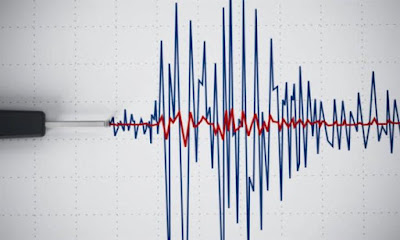Filenews 31 January 2022 - by Andria Demetriou
An exacerbation of the seismicity of the Greek seismic arc has been observed in the last two years and it is not excluded that we will now be in the period of exacerbation of seismicity and the Cypriot arc. Speaking to philenews, the officer of the Geological Survey Department, Sylvana Pilidou, explains that both areas are part of the same geotectonic environment, that of the Mediterranean rupture zone, which is the boundary of the collision of two main tectonic plates, while she points out that the recent large earthquakes that occurred in 2022 are due to the collision and active subduction of the African plate under the Eurasian plate in the western part of the Cypriot seismic arc.
At the same time, she notes that the temporal distribution of the seismic activity of an area fluctuates, i.e. there are periods of intense seismic activity and periods of seismic recession. For example, during the 1990s there was an upsurge in the seismic activity of Cyprus with a series of strong earthquakes, while during the previous four decades and next two decades a relative seismic recession prevailed.
Earthquakes felt, but not damaged
Asked to comment on the fact that while the earthquakes are quite noticeable, however no damages were recorded, Mrs. Pilidou said that the large earthquakes that occurred so far in 2022 are fortunately of low intensity in the residential areas of Cyprus, some due to a large epicentre distance, some due to a large focal depth and some others by a combination of these factors, as well as the favourable position of Cyprus, geometry of the radiation of the energy of earthquakes, which is due to the geometrical characteristics of this fault.
Delay in earthquake announcements
Regarding the delay observed by the Geological Survey Department in informing about the earthquakes compared to the Euro-Mediterranean Seismological Center (EMSC), Mrs Pilidou said that the Department announces data, which have emerged from the processing of data by the staff of the Seismological Center and have been thoroughly checked to ensure full validity. The seismological network immediately after the occurrence of an earthquake, provides automatic estimates (such as those originally published by EMSC), but the present policy of the Department is not to make them public.
She also noted that the Seismological Center is staffed during the public hours, without any on-call system outside this working hours, due to the very small number of trained in seismology employees (two officers and one technician).
In case of a noticeable earthquake outside working hours, as mentioned by Mrs Pilidou, the Seismological Center is staffed exceptionally or through teleworking, depending on the availability of staff, since no on call system operates, so delays are observed. The response (staffing or related teleworking) in these cases, no matter how late it may be, is a result of the conscientiousness of the employees of the Seismological Center.
At the same time, Mrs Pilidou explained that the Department is an active member of EMSC and immediately after the outbreak of an earthquake, the Euro-Mediterranean Center begins to have some information, but does not have seismological stations. What EMSC does is to collect information initially with the internet traffic to its website / application and later from the various seismological networks of the world, including the Cyprus Seismological Network of the Geological Survey Department and to combine all measurements together in total for its own assessment of the parameters of the earthquake.
The first data available to EMSC are the automatic estimates from the various seismological networks, i.e. data that a seismologist has not revised, so the accuracy of the first information is not great. With the passage of time after the onset of the earthquake, the various seismological centres, as well as the Cyprus one, send the data revised by seismologists and slowly - slowly the information from this centre becomes more correct and accurate, but it is still an overall estimate from measurements from many seismological networks. For local earthquakes the data obtained from our own local network have the maximum accuracy and validity.
Local earthquakes are recorded on a daily basis and processed by the staff of the Seismological Center and published the relevant information on social media (website: www.gsd-seismology.org.cy, twitter: @CY_earthquakes).
